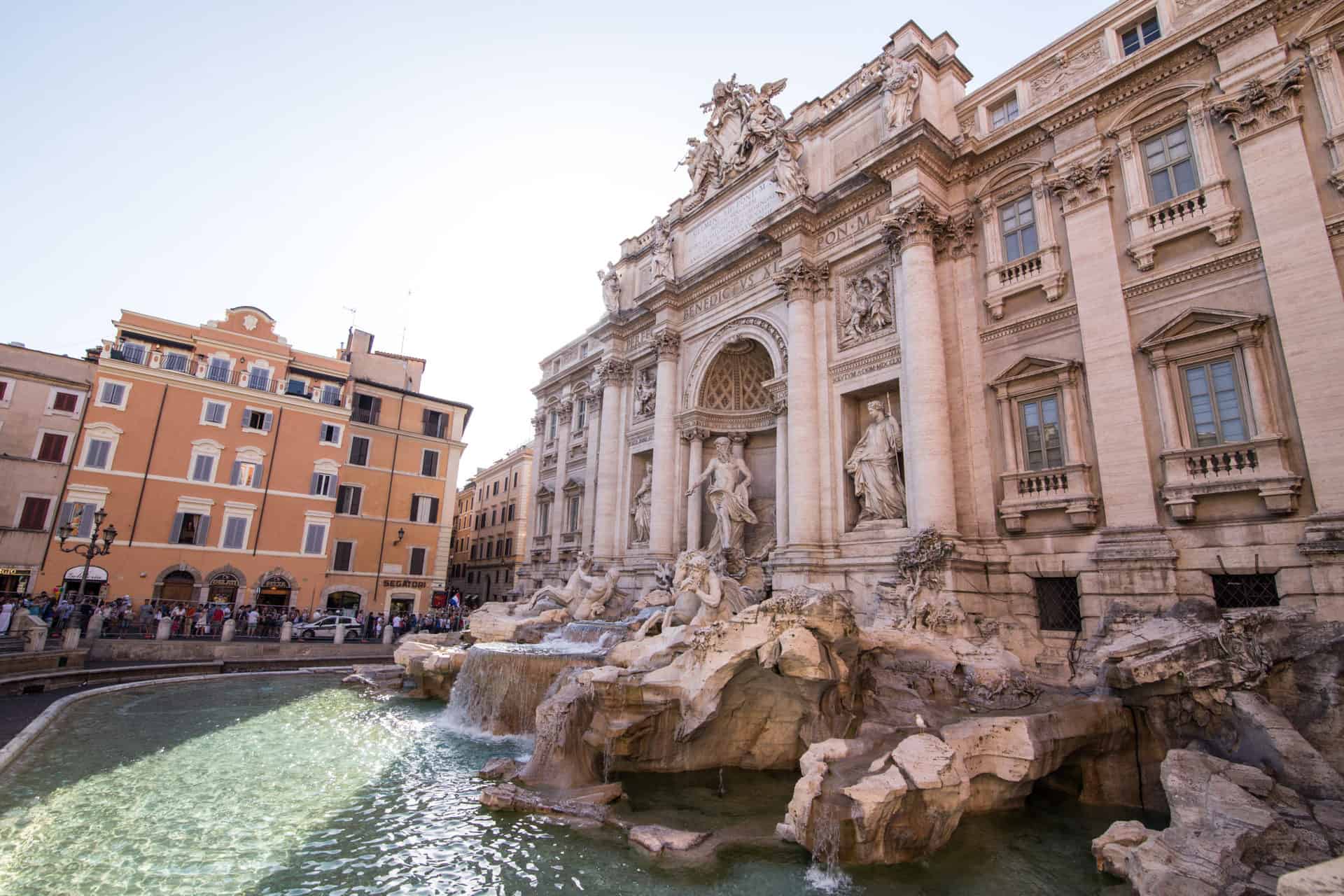Under the Sea: Marine Cultures and Insights into Ocean Conservation Challenges

Updated On: April 17, 2024 by Ciaran Connolly
Exploring the depths of the ocean unveils an incredible tapestry of marine cultures that have fascinated humanity for centuries. These cultures extend far beyond the coastal traditions of maritime communities; they represent a profound connection we all share with the sea. Our oceans hold countless mysteries and are home to a myriad of species that contribute to Earth’s biological diversity. As vital as they are enigmatic, oceans are a source of sustenance, recreation, and natural wonder, shaping civilisations and influencing ecosystems across the globe.

The conservation of marine environments is crucial in maintaining not only the health of oceanic ecosystems but also the cultural heritage they support. Protecting marine life, battling pollution, and managing ocean resources sustainably are all essential actions needed to preserve this invaluable natural resource. However, the path to effective conservation is fraught with challenges, from the political complexities of international waters to the ever-present threats of climate change and habitat destruction. As stewards of the Earth, our collective effort is imperative to safeguard the oceans for future generations, ensuring that their mysteries continue to inspire and their resources remain available for sustainable use.
Key Takeaways
- Oceans are a cornerstone of diverse marine cultures and biodiversity, deeply intertwined with human heritage and global ecosystems.
- The sustainability and conservation of marine environments are critical, requiring concerted global efforts to navigate complex challenges and threats.
- Effective marine conservation practices ensure the preservation of the ocean’s cultural significance and the continued support of the life it sustains.
The Essence of Marine Cultures
Marine cultures encapsulate the enduring relationship between humanity and the seas, crafting a mosaic of traditions and narratives that are vital to our heritage and continue to influence modern conservation efforts.
Evolving Oceanic Traditions
We see a remarkable tapestry of oceanic traditions that have evolved over millennia. Coastal communities are often defined by their deeply ingrained practices of fishing, navigation, and storytelling, which have been passed down through generations. Such practices not only reflect the livelihoods of the communities but also speak volumes about their resilience and adaptability to the changing marine environment.
Indigenous People and Maritime Heritage
The maritime heritage of indigenous communities is an integral part of their collective identity. Their intimate connection with the ocean manifests in various customs, from sustainable fishing methods to elaborate ceremonies that convey respect for the marine life that sustains them. This respect is rooted in a profound understanding of the ocean’s ecosystems, illustrating the cultural significance that these bodies of water hold for the indigenous peoples.
Stories of the Sea
Across all cultures, stories of the sea have captivated our imagination. These narratives, ranging from mythological tales to accounts of historic voyages, are more than mere entertainment; they embody the values, morals, and cultural significance embedded in marine cultures. Through listening and sharing these stories, we foster a deeper connection with the past and a greater appreciation for the marine heritage that shapes our present.
By advancing the preservation of marine cultures and stories, we join in safeguarding the diversity and richness of our shared maritime heritage.
Historical Overview of Marine Conservation

In this section, we’ll traverse the timeline of marine conservation, from its ancient beginnings to the sophisticated approaches of today. Our journey will take us through the early efforts to preserve oceanic ecosystems, the pivotal role of international agreements, and the progression of strategies aimed at protecting our marine heritage.
Origins of Ocean Preservation
The concept of marine conservation has been intrinsic to human societies for millennia. Indigenous cultures worldwide have recognised the importance of balanced marine ecosystems and instituted informal, yet effective, practices to ensure the sustainability of these vital resources. These foundational approaches laid the groundwork for formal conservation efforts.
World Heritage Convention Impact
The inception of the World Heritage Convention by UNESCO in 1972 marked a global turning point for the protection of cultural and natural heritage, with ocean conservation becoming an area of international focus. World Heritage sites now include critical marine habitats, highlighting the universal value of conserving these environments for future generations.
Evolution of Conservation Strategies
Over time, conservation strategies have undergone remarkable development, evolving from simple fishery closures to comprehensive management plans encompassing entire marine ecosystems. Advancements in science and technology, coupled with a growing public awareness, have driven this evolution. Strategies such as marine protected areas have become essential tools in our conservation arsenal, aiming to safeguard biodiversity and ensure the sustenance of ocean resources.
Through exploring the development of ocean conservation, we’ve seen how cumulative efforts over centuries have sculpted the frameworks we utilise today. Though our understanding and methods have advanced, the core objective remains steadfast: to protect the vast and intricate tapestry of life beneath the waves for the prosperity of all.
Ocean Biodiversity and Its Inhabitants
Oceans teem with life, housing an incredible variety of species from the smallest plankton to the largest whales. Our understanding of this biodiversity is crucial for conservation efforts.
Marine Species Diversity
Marine biodiversity is astonishing, with species ranging from the microscopic zooxanthellae that live symbiotically within coral reefs, to the majestic blue whale. Scientists estimate that over one million marine species inhabit the oceans, many yet to be documented. These species form complex food webs and play various roles in their ecosystems, from predators to scavengers.
- Examples of Species
- Phytoplankton
- Coral Polyps
- Various Fish Species
- Marine Mammals
- Crustaceans
Researching and protecting this rich tapestry of life is a priority, as marine biodiversity is a vital part of our planet’s health.
Critical Marine Habitats
Marine habitats are as diverse as the species they support. Critical habitats such as coral reefs are centres for marine biodiversity, providing shelter, breeding grounds, and places to hunt for countless marine organisms.
- Critical Habitats
- Coral Reefs
- Mangrove Forests
- Seagrass Meadows
- Hydrothermal Vents
- Open Ocean Zones
The preservation of these habitats is vital. They offer protection against coastal erosion, maintain water quality, and serve as nurseries for many marine species. Protecting these ecosystems is not just about conserving the beauty of nature; it’s about understanding our place within the biosphere and ensuring a sustainable future for generations to come.
Conservation Challenges and Threats
In addressing the pressing issues threatening our oceans, it’s vital we confront the severe impacts of climate change, unsustainable fishing practices, and pollution, all of which hobble the efforts towards marine conservation.
Climate Change and Its Effects
Climate change is resulting in rising sea temperatures and disrupting marine ecosystems worldwide. For example, increased ocean temperatures are leading to coral bleaching, which endangers the rich biodiversity they support. Our understanding of the effects of climate change has significantly improved, guiding conservation efforts.
Overfishing and Trawling Concerns
Overfishing is decimating fish stocks, with methods such as trawling having devastating effects on the seabed. Trawling not only removes large numbers of fish but also disturbs the habitat, affecting species recovery. The harm caused by these practices underscores the need for more rigorous marine biodiversity conservation.
Pollution: Pipelines and Shipwrecks
Pollution from pipelines and shipwrecks poses a significant threat to marine life. Oil spills from damaged pipelines and sunken vessels introduce toxic substances into the water, which are harmful to various forms of marine life. Our strategies must include measures to prevent such disasters and mitigate their impacts when they do occur.
Marine Protected Areas
Marine Protected Areas (MPAs) are crucial for nurturing marine biodiversity and ensuring the sustainable management of ocean resources. These zones range from regions with full preservation status to areas that permit limited human activity, all pivotal for ocean conservation efforts.
Papahānaumokuākea and the Pacific Ocean
Papahānaumokuākea Marine National Monument stands as one of the largest conservation areas, forming a sanctuary for numerous marine species in the Pacific Ocean. It encapsulates an array of natural marvels from pristine coral reefs to rare sea creatures, serving as a barometer for the health of the wider ocean.
Governance and Enforcement of Protected Zones
Effective governance of MPAs requires robust partnerships between governments, local stakeholders, and international bodies. Enforcement hinges on clear legal frameworks and the commitment of resources to monitor activities and ensure compliance within protected zones. Without stringent governance, the purpose of MPAs risks being undermined.
We recognise that MPAs like Papahānaumokuākea are not mere isolated water columns but part of a larger marine ecosystem interlinked across the Pacific Ocean. Their governance is no small feat, with local authorities and global partners coordinating efforts to safeguard these underwater treasures.
Sustainable Practices and Resource Management

Embracing sustainability in ocean use is crucial for the well-being of marine ecosystems. We focus on enhancing fisheries management, advocating for sustainable seafood, and valuing indigenous knowledge to maintain the ocean’s health.
Fisheries Management Models
Effective management of fisheries is rooted in our understanding of marine ecology and resource economics. By implementing evidence-based models, we can forecast fish population changes and determine sustainable catch limits. For instance, the integration of ocean management ensures a balance between marine conservation and economic interests, as described in the approach aimed at sustaining ocean economies. Recognising the multidimensional aspects of marine management, such as the spatial dynamics, allows us to craft policies that address both ecological and social needs.
Promoting Sustainable Seafood
We support the promotion of sustainable seafood, wherein consumers and businesses are encouraged to opt for fish products sourced without harming the environment. It involves steering demand towards species that are abundant and harvested with minimal ecological impact. Fostering a market for sustainable seafood not only preserves biodiversity but also sustains the livelihoods of communities dependent on the fishing industry.
Indigenous Conservation Methods
Indigenous communities hold a wealth of knowledge on conserving marine resources that have sustained their way of life for centuries. These methods are inherently sustainable, often involving seasonal and selective fishing practices that allow marine populations to thrive. Acknowledging and integrating cultural values and traditional expertise into broader conservation efforts can be instrumental in preserving the oceans while respecting the rights and wisdom of native peoples.
Life at Sea: Livelihood and Recreation

Marine ecosystems play a crucial role in supporting communities worldwide, not only for nourishment but also for leisure activities that range from the adventurous to the serene.
Fishing Communities and Diets
Fishing remains the lifeblood of many coastal communities, with seafood constituting a significant portion of their diet. Our traditional fishing methods have sustained us for generations, reflecting a harmony between our way of life and the rhythm of the sea. These communities remain pivotal, as they contribute substantially to global food security and the economic fabric of their respective regions.
- Primary Fish Varieties: Cod, Haddock, Tuna, Salmon
- Fishing Techniques: Trawling, Longlining, Hand-lining, Netting
- Market Contribution: Employment, Fresh Produce, Export Duty
Ocean Recreation: Scuba Diving and Sports
Diving beneath the waves, we uncover a world teeming with life, an experience that is both a recreational pursuit and a profound connection to nature. Scuba diving offers an intimate glimpse of coral reefs and marine wildlife, often leading to a deeper commitment to conservation efforts. Similarly, ocean sports like surfing and sailing have become integral to our cultures, promoting a healthy and active lifestyle tied to the majesty of the sea.
- Popular Dive Sites: Great Barrier Reef, Red Sea, Caribbean Islands
- Marine Life Encounters: Dolphins, Tropical fish, Turtles, Sharks
- Recreational Benefits: Physical Health, Mental Well-being, Environmental Awareness
Science and Research in Ocean Ecology

In the field of ocean ecology, substantial efforts are directed towards the exploration of marine environments and assessment of marine resources, seeking to understand and preserve these critical ecosystems.
Exploring Marine Environments
Researchers tirelessly map and study diverse underwater landscapes, from shallow coral reefs to the abyssal depths of the ocean trenches. Tools like remotely operated vehicles (ROVs) and advanced sonar mapping techniques reveal hidden features and species we have never seen before. This is vital for learning about the planet’s least understood and most biologically rich areas. Such exploration is not just about charting unknown territories but also about understanding the complex relationships within marine ecosystems.
Assessing Marine Resources
Evaluation of marine resources is imperative for sustainable management. Our scientists gather data on species populations, health, and habitats, uncovering the impacts of human activities and climate change. This information supports evidence-based policies and conservation efforts. For instance, the development of an online gateway to coastal science facilitates access to this crucial data, driving better resource stewardship. The assessment also includes tracking the efficacy of marine protected areas (MPAs) to ensure the long-term sustainability of these vibrant underwater communities.
International Collaboration and Ocean Governance
In an era where the preservation of marine environments has become critical, international collaboration and ocean governance play pivotal roles in securing the future of our oceans. We must forge strong alliances and execute well-planned strategies to achieve significant conservation goals.
Cross-Border Cooperation
We see the necessity for cross-border cooperation as vital to the health of marine ecosystems. Countries around the world are engaging in concerted efforts to manage the use of ocean resources responsibly. Such cooperation is not a luxury; it is rather a priority that ensures the sharing and protection of common marine heritage.
Key Entities:
- Governance: Regional and international agreements to manage shared waters
- Planning: Joint actions for sustainable fisheries and pollution reduction
Policy Planning and Environmental Goals
Policy planning is quintessential to set clear environmental goals. Drawing on our collective expertise, we work towards developing policies that are both achievable and ambitious. This positions us to meet targets that foster long-term sustainability of oceanic realms.
Key Elements:
- Priority: Establishment of marine protected areas
- Goals: Reduction of ocean pollution and promotion of biodiversity
The Role of National Geographic and UNESCO
National Geographic and UNESCO are invaluable in our quest for ocean conservation. National Geographic’s storytelling brings the beauty and plight of the oceans to a broad audience, while UNESCO’s designation of Marine World Heritage sites underscores the global significance of these areas. Together, they create a powerful voice for advocacy and education.
- National Geographic: Raises awareness through captivating visual narratives
- UNESCO: Safeguards marine sites with outstanding universal value
Conservation Priorities and Future Directions
In our rapidly changing world, the urgent need to protect the ocean drives our conservation priorities. Through developing global proposals and fostering resilience, we aim to safeguard our seas for future generations.
Developing a Global Conservation Proposal
Our proposal places emphasis on strategic conservation efforts that are essential at an international level. It’s vital that we designate areas where marine life is at great risk and establish marine protected areas (MPAs) that cover these regions. By doing so, it’s estimated that more than 80% of the ranges of endangered species will benefit, a significant increase from the current coverage. Moreover, fostering international cooperation is the cornerstone of this comprehensive strategy to ensure effective conservation actions and policies are universally adopted. A significant step forward in this regard has been the landmark United Nations agreement for the conservation and sustainable use of marine biodiversity in high seas, which acknowledges the need for strong science to underpin future directives.
Fostering Resilience and Protecting the Oceans
Increasing resilience among marine ecosystems stands as a top priority. This means safeguarding biodiversity and addressing the threats of overfishing, pollution, and climate change. To accomplish this, we support the global goal of protecting 30% of the planet’s oceans by 2030. Implementing conservation efforts that promote the recovery of marine populations and habitats will not only protect ocean health but also support the communities that depend on these ecosystems. By doing so, we align with frameworks like the sustainable development goals which integrate ocean conservation into broader agendas that seek to balance ecological integrity with human well-being.
Frequently Asked Questions
We often receive inquiries about the enigmatic and varied world beneath the waves. Below, we address some of the most frequently asked questions about marine mysteries, cultural differences, conservation efforts, and more.
What are the most significant unexplained phenomena in marine environments?
The ocean is filled with unsolved puzzles, from underwater anomalies that defy explanation to mysterious ocean sounds whose sources have eluded discovery. These phenomena provoke curiosity and scientific inquiry, reminding us of how much there is yet to learn about our oceans.
How do marine cultures differ around the world and what unknowns remain?
Marine cultures vary greatly, each with unique practices and traditions connected to the sea. These range from navigational techniques to fisheries management. Despite our learning, there are still unknowns about how these cultures have adapted to and interacted with marine environments over the centuries.
What efforts are being made in the realm of ocean conservation, and what challenges persist?
Conservationists are tirelessly working to protect our oceans through policy-making, habitat restoration, and awareness programs. Challenges like climate change and pollution are formidable, but structured ocean conservation efforts provide a framework for action and hope for the future.
In what ways does the ocean’s vastness contribute to its mystique and the preservation of its secrets?
The sheer scale of the sea, covering over 70% of our planet, means that much of it remains unexplored. This vastness protects its many secrets and contributes to the allure that has inspired countless explorers and scientists to uncover more about this mysterious underwater world.
Which enigmatic creatures of the sea have eluded full scientific understanding?
The depths of the ocean are home to a plethora of creatures, some so elusive that they are rarely seen. For example, the colossal squid has been seldom observed in its natural habitat, and its behaviour and ecology remain largely shrouded in mystery.
How do current oceanographic explorations aid in uncovering the hidden aspects of marine life?
Modern explorations equipped with advanced technologies are making strides in unveiling the hidden facets of the ocean. These explorations, from robotic submersibles to sophisticated mapping techniques, enable us to uncover species and ecosystems that remind us of the ocean’s depth, diversity, and wonder.






